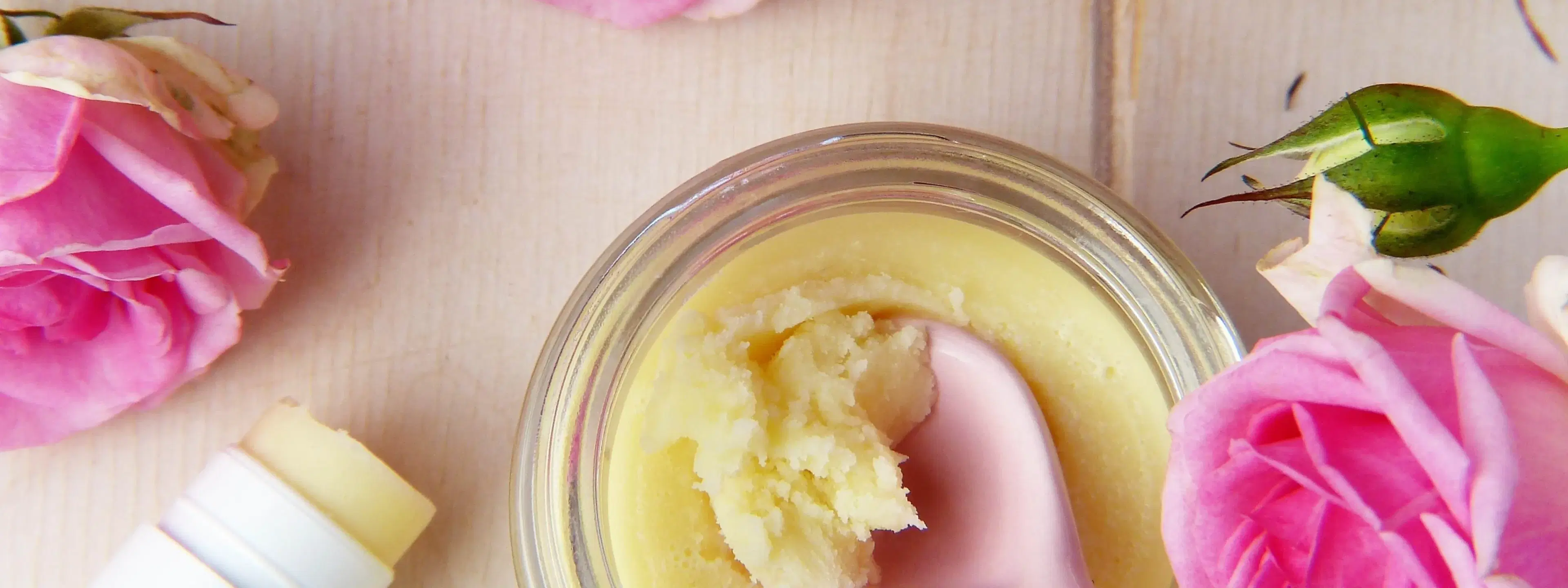
Beauty & Skincare
•04 min read
-5ba1f1f6-995b-4617-a1ff-43890351cff7.png&w=3840&q=75)
Cocoa butter and shea butter are two powerhouse ingredients in the natural skincare world. In this guide, we will explore the 7 key differences between cocoa butter vs shea butter. Whether you are looking for the benefits of cocoa butter for skin, a cocoa butter moisturizer to reduce scars, or seeking shea butter for dry skin and sensitive care, this guide will help you understand which butter meets your skin's needs best.
Cocoa butter is extracted from the cacao bean and has long been celebrated for its ability to heal and moisturize skin. It is processed from cacao beans, giving it a firmer texture and a natural chocolate aroma. In contrast, shea butter is derived from the nuts of the shea tree (Karité) and carries a legacy of African skincare traditions. It is hand-extracted and minimally processed, resulting in a softer, creamier consistency that many find ideal for everyday use.
Cocoa Butter: Processed from cacao beans, offering a firmer texture and a distinct, chocolate-like aroma.
Shea Butter: Hand-extracted with minimal processing, yielding a softer, creamier product that enhances natural skincare with cocoa butter and shea butter benefits.
When it comes to texture, smell, and appearance, cocoa butter and shea butter offer unique sensory experiences. Cocoa butter, known for its rich, chocolate-like fragrance, is hard and solid at room temperature. It appears pale yellow or off-white, requiring a bit of warming before application. Conversely, shea butter is soft and spreadable even at room temperature. Its subtle, nutty aroma and ivory or beige appearance lend themselves well to a daily skincare routine, especially if you need shea butter for sensitive skin or for treating eczema.
Pro Tip: If you prefer a lightweight butter for everyday use, shea butter is ideal. For a luxurious, aromatic experience, cocoa butter is the way to go.
-9872eb55-9af0-4022-8644-bd8f05e8333e.png&w=3840&q=75)
Cocoa butter is loaded with fatty acids and antioxidants. It works wonders as a cocoa butter moisturizer, locking in moisture and boosting skin elasticity. This ingredient is often praised for its role in diminishing the appearance of scars and stretch marks, making it a top choice for those looking to improve skin texture and seek cocoa butter for scars. On the other hand, shea butter is rich in vitamins A and E, offering intense hydration and anti-inflammatory properties. This makes shea butter for dry skin and shea butter for sensitive skin an excellent option for soothing irritated or dry areas and even addressing concerns like stretch marks.
Choosing between cocoa butter and shea butter can depend on your specific skin concerns. For dry skin, shea butter stands out with its ability to deeply nourish and repair skin. Its creamy texture makes it particularly suitable for sensitive areas. When it comes to scars and stretch marks, cocoa butter is widely recognized for its efficacy in reducing their appearance over time. Moreover, for sufferers of eczema, the debate between cocoa butter vs shea butter for eczema continues, with many preferring the anti-inflammatory benefits of shea butter to alleviate discomfort while remaining gentle on skin.
Did You Know? Cocoa butter has been a favorite ingredient in aromatherapy, prized for its soothing, natural chocolate scent. Meanwhile, shea butter is often celebrated for its ability to visibly improve stretch marks, especially during pregnancy.
Both cocoa butter and shea butter offer unique benefits but can behave differently on sensitive skin. Cocoa butter may sometimes clog pores, which can be a drawback for acne-prone skin. Its distinct fragrance might also be too strong for some individuals. In contrast, shea butter is non-comedogenic and tends to be gentler on the skin. Its mild scent and soothing properties make it a better option for those with sensitive or acne-prone skin, offering hydration benefits of shea butter without the worry of irritation.

Cocoa butter and shea butter shine in diverse skincare applications. Cocoa butter is a common ingredient in body lotions, lip balms, and treatments designed to reduce scars. Its ability to be a base for DIY skincare recipes makes it a versatile component in natural routines. Shea butter, with its raw form offering maximum hydration benefits, is indispensable in creams, balms, and even hair care products. Its widespread use underlines the difference between cocoa butter and shea butter in terms of catering to various skincare needs, from moisturizing to soothing sensitive skin.
It depends on your skin needs. Cocoa butter is great for reducing scars and stretch marks, while shea butter excels at hydrating and soothing sensitive or dry skin.
Both are excellent, but shea butter is more versatile, especially for sensitive or acne-prone skin. Cocoa butter is ideal for targeting scars and enhancing skin elasticity.
Cocoa butter is generally more effective for reducing the appearance of scars due to its high fatty acid content.
Cocoa butter can clog pores, making it less favorable for acne-prone skin. Its strong fragrance may also not appeal to everyone.
Cocoa butter and shea butter are both incredible natural ingredients that offer unique benefits for the skin. Cocoa butter is ideal for reducing scars, enhancing elasticity, and providing a rich aromatic experience, while shea butter is perfect for deep hydration and soothing sensitive skin. By understanding the nuanced difference between cocoa butter and shea butter, you can choose the one that best suits your skincare goals. Embrace these natural ingredients to create a skincare routine that reflects your personal style and care for your skin.